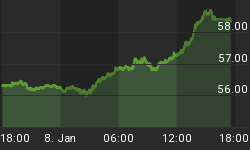Nowadays, long-suffering emerging market currencies including the Argentine peso, Brazilian real, South African rand and Russian ruble have found themselves a new friend in the Western world—the Australian dollar.
The Aussie has been on a precipitous decline, falling nine percent against the dollar since its January peak. AUD continued slipping further in Thursday trade to close below 74 US cents, the first time it has breached that mark this year.
AUD has also been losing ground against most major world currencies in a big way. In fact, the AUD together with the Swedish kronor are the worst performing major world currencies this year.

(Click to enlarge)
Source: Investing
Whereas most emerging currencies have been falling due to monetary tightening and climbing interest rates in the U.S., the Aussie and the yen, have become collateral damage as trade disputes between the U.S. and China—Australia’s largest trading partner—continue to escalate.
A full-blown war between the two nations might yet be avoided, but there’s already a whiff of grapeshot in the air.
Such a toxic environment hardly inspires a risk-taking appetite in the markets as anyone who had underestimated the significance of the cross-border links must have come to realize.
Related: Should Investors Start Lining Up For North Korea?
The Australian Trade and Investment Commission (ATIC) announced in December that 66 percent of the country’s exports went to East, Asia with nearly 30 percent landing in the Middle Kingdom. China’s rebounding steel industry has been particularly bullish for the Australian economy.
But with the Chinese economy beginning to show signs of cooling, Australia is bound to suffer. Economists have penciled China’s growth to drop to 6.5 percent this year from 6.9 percent the previous year.
Meanwhile, Fed actions in the U.S. have also been taking a toll on the Aussie. Specifically, interest rate differentials as rates increase in the U.S. but stay low in Australia are likely to induce a net flow from the Aussie to the greenback.
The Australian 10-year bond yield has continued to slide to a current reading of 2.62 percent compared to 2.90 in the U.S. The bond yield differential between the two countries is expected to hit 50 basis points in 2019 as yields in the country continue falling further while those in the U.S. keep climbing.
Hedge Funds Are Bearish About AUD
Many hedge funds are predicting that things will get worse, not better, for the Australian dollar. The hedge funds have also been keeping their money where their mouths are, having boosted their wagers against the currency from a net long position three months ago to a net short one a month ago.

(Click to enlarge)
Source: Bloomberg
Blackrock is the latest Wall Street analyst to join the AUD bear camp and sees the currency dropping below 70 US cents this year, as does WestPac Banking Group, which has predicted a similar level but in 2019.
Pendal Group is even less sanguine and expects the Aussie to drop to the mid-60s over the next 12 months, while Goldman is a bit more optimistic and sees it at 72 cents at year-end, thus implying only a slight drop from where we are.
Even in a neutral situation, the Aussie will still have to contend with a stronger dollar due to Fed tightening. Either way, the outlook for AUD/USD pair looks bearish.
By Alex Kimani for Safehaven.com
More Top Reads From Safehaven.com:

















